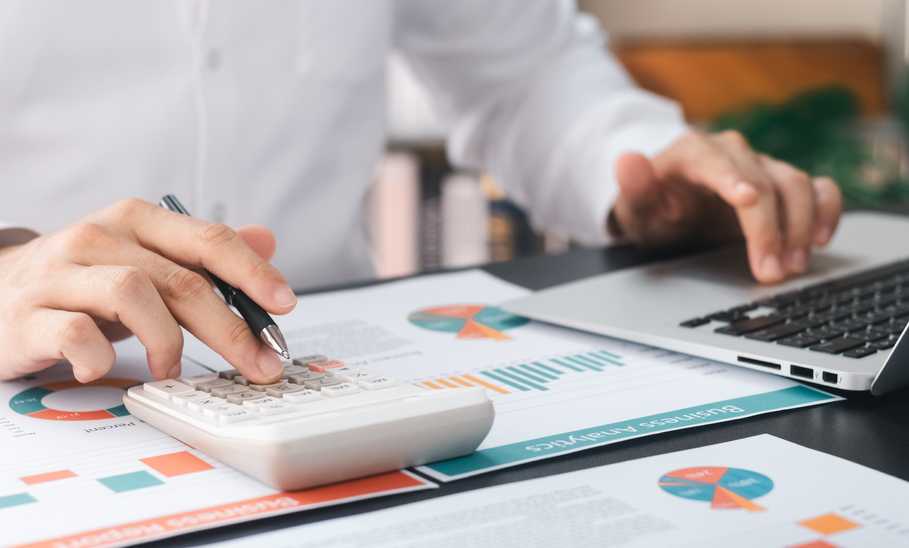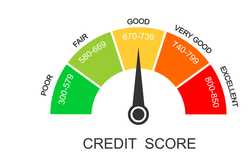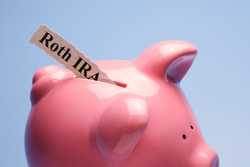Does a Debt Management Plan Affect Credit?

Our evaluations and opinions are not influenced by our advertising relationships, but we may earn a commission from our partners’ links. This content is created by TIME Stamped, under TIME’s direction and produced in accordance with TIME’s editorial guidelines and overseen by TIME’s editorial staff. Learn more about it.
If debt keeps you up at night, you’re far from alone. It’s a suffocating weight that can take the joy out of everything you do.
If you can’t see a way of escape, a debt management plan, or DMP, could be for you. Created by working with a debt counselor, DMPs are based on agreements negotiated with your creditors to potentially lower interest rates and bring your delinquent accounts current. They’ll even roll the debts in your plan into a single monthly payment, which can make things much more manageable. Plans generally entail a three-to-five-year program, in which you make payments to the agency and it forwards them to the creditors.
DMPs are different from debt relief plans. One of the primary differences is that you don’t have to stop payments on your loans for DMPs to kick in. They are one of a variety of options to settle debt—up to, and including, bankruptcy.
Let’s take a look at the good and the bad that comes with a DMP to help you decide if it’s right for your situation.
| Pros | Cons |
|---|---|
Professional help | Select credit cards will be closed |
Lower monthly payment | You’ll pay fees |
Lower interest rate | Doesn’t cover all debts |
Debt collectors stop calling | The majority of participants don’t complete the program |
Many people considering a DMP are swimming in credit card debt. If that’s your situation, making minimum payments across multiple credit cards may be the only thing you can afford at the moment. And doing that—even if you can swing it—can put you further behind as the interest payments add to your original debt.
The obligation to make multiple minimum payments each month can amount to hundreds of dollars, perhaps even more than $1,000. This makes it difficult to eliminate one credit card bill at a time to decrease the number of minimum payments you’re making.
A DMP can solve this problem. All your credit card bills (or other unsecured debt) will be rolled into a single bill each month, which could result in you paying a fraction of your credit cards’ monthly minimum payments. This can free up more money to pay off the principal.
The monthly interest fees that are rolled into your minimum payment are often severe. A DMP can result in lower interest rates.
Rewards credit cards routinely charge an APR of 25% or more—effectively imprisoning your finances for many years if you dig yourself into a hole of debt. With rates that high, your monthly minimum payments are largely interest. Debt management counselors can negotiate a lower interest rate for you, meaning you’ll see a big difference in the velocity of your debt reduction.
To create a DMP, you’ll work with a counselor, who will audit your finances and help you decide the most beneficial plan of attack. They can even request waived account fees with your lender.
The U.S. Dept. of Justice has a state-by-state list of approved credit counseling agencies that can help you find one. Local or state consumer groups may also be able to help. Be sure to use a recognized nonprofit agency and research it before signing up. There are credit-counseling scams.
The counselor will look at the size of your debt and assess your income. There’s no need to feel vulnerable or embarrassed about these details as you are in a judgment-free environment. Talking things out with a professional can be very cathartic and educational. They’ve seen it all, and they’ll have answers to any questions you might have.
In fact, the counselor may suggest that you not initiate a DMP. If they can find another feasible path out of debt, they’ll tell you.
If your credit cards have been handed over to collections, you’ve probably experienced a nauseating amount of phone calls. Voicemails hounding you for money is one of the most stressful aspects of debt..
When you enter into a DMP that includes credit cards that have been sent to collections, the phone calls should eventually stop. Debt collectors will be notified that you’ve created a plan to pay back your balances.
DMPs can help you pay down your unsecured debt considerably faster. The tradeoff is that you’ll have to close those accounts.
For example, any credit cards you choose to include in the DMP will be closed. You won’t be able to use those credit lines anymore. For this reason, it could be wise to not include all your credit cards—even if they’ve all got debt. Perhaps keep one open and use the money you’re saving on your other debt to pay down your one open card. That way you’ll at least have access to one credit line. Of course, this strategy is only worth pursuing if you still feel comfortable having a credit card and commit yourself to using it wisely.
Though credit counseling agencies are usually nonprofit, that doesn’t mean they’re free. The initial counseling session you’ll receive might be free, but there are startup fees for entering into a DMP (usually less than $50) and monthly fees (usually less than $75). If you are paying a lot of interest, which basically amounts to setting your money on fire, the price tag of a DMP could easily be justified.
DMPs are most commonly for unsecured debt, such as credit cards and personal loans. In other words, they’re not for mortgages, auto loans, and other debt backed by collateral. If you’re feeling overwhelmed with secured debt, a DMP isn’t a viable option—though you are still welcome to set up a meeting with a debt management counselor for advice. They also don’t work for student loan debt or unpaid taxes, both of which have separate mechanisms for settling debts.
According to Debt.org, some 55% to 70% of people who begin a debt management program don’t complete it. The programs generally take three to five years—a very long time. People in programs with higher interest rates were more likely to fail to finish.
As soon as you enter into a DMP, all the accounts you’ve requested help with will close.And any time you close a credit account, it will adversely affect your credit history, which accounts for 15% of your overall credit score.
For example, you can use a DMP to roll the debt you’ve amassed on five credit cards. But when you do that, those five credit cards will be closed, potentially lowering your average credit account age by many years.
This isn’t the end of the world, though. A DMP could still be a no-brainer for people with considerable debt.
Similarly, when your credit cards are closed after being rolled into a DMP, the credit lines you lose can contribute to an increase in credit utilization.
Credit utilization is the ratio of the amount of credit you’re using compared to the amount of available credit you have. If you choose to keep a credit card or two open and close the rest, the percentage of credit you’re using may be much higher. This is a big deal because credit utilization accounts for 30% of your overall credit score.
Still, that shouldn’t put you off the idea of a DMP. You can rebuild your credit later—the priority is that you get out of debt.
If you’re currently allowing credit card bills to go unpaid because you can’t afford even the minimum monthly payment, a DMP will revolutionize your credit for the better.
Not only will you have a much easier time making on-time payments via a DMP, but your creditors may “re-age” your delinquent accounts to make them current. All these accounts will be recorded as on-time payments as long as you make your DMP payment on time.Payment history accounts for 35% of your credit score. Creditors care more about this than anything else, so it’s critical that you do whatever it takes to make on-time payments.
To ensure you never miss a payment due date, you can set up automatic payments with your bank account or with an alternate account like Cash App, which has the ability to send payments to lenders on specified dates.
There are several things to try before you commit to a DMP.
Balance transfers are the act of moving debt from one account to another account. It sounds nonsensical, but it can actually be a boon.
For example, if you’ve got debt on a high-interest credit card, you can open a credit card that offers 0% intro APR on balance transfers. Just note that if your credit score is already in the basement because of your high credit utilization and/or missed payment history, you may not get approved for a new credit card. And if you do get approved, you may receive a paltry credit line that’s not enough for you to transfer a meaningful amount of that high-interest debt.
When you take out a personal loan from a bank, you can use it for literally anything you want. If your finance margins are razor-thin and you need some breathing room, a personal loan could be the way to go. A lump sum of money can help you to guarantee you’ll have the funds for many future months of minimum payments. Alternatively, you can use that money to zero out some of your credit cards (we’ll talk about this option a little more below).
Again, you may not be approved for a personal loan if your credit score is poor as a result of your current debt. You should shop for the best personal loan rates and see which companies will match your financial needs.
There are a handful of powerful apps that can help you keep track of your finances and push you toward your payoff goals. They are often visual and convey action steps in a digestible way to keep you motivated.
For example, Quicken offers a tool that helps you to craft a debt reduction plan. Quicken will scan your profile for accounts with balances and present them to you with two options: accounts to include in your plan and other debt accounts. You’ll also be able to see the interest rates and minimum payments for each account. If you’ve got debts that are low-priority (say, an account that has a low APR), you don’t have to add them to your plan. You can instead focus on the accounts that are sucking the life out of your bank account.
Another option is Monarch, an app that helps with your budget. It employs the zero-based budgeting system, which demands that you input exactly where every penny of your income goes each month. This holds you accountable for all your spending to help you uncover seemingly innocuous purchases that might be making a big dent in your finances.
You’ll have the option to talk through a DMP either in-person, by phone, or online. The medium may not normally be a big issue for most, but it’s worth mentioning because of the potentially uncomfortable nature of the meeting.
When looking for a credit counselor, most folks will want to stick with nonprofit organizations. Agencies within the National Foundation for Credit Counseling or the Financial Counseling Association of America are good places to begin.
You’re going to want to enter this meeting prepared with the knowledge of your situation. Examine your credit report, utilize debt management apps, and view your individual accounts to help give your counselor everything they need to provide an informed decision.
Credit counselors do an excellent job at contacting your lenders to ask for lower rates and waived fees. However, you can actually do this yourself by calling the customer service number on the back of your credit card. By explaining your current situation of financial hardship (and ideally bolstering your credibility with a lengthy history of on-time payments), you might be surprised at how willing a lender is to lower your interest rates, if only temporarily.
A debt consolidation loan is a type of personal loan that, instead of simply handing you a giant check, commonly pays your debts directly. You’re then indebted to the lender that extended you the debt consolidation loan. This can drastically lower both your interest rates and your monthly payment. The problem is that with poor credit, it’s difficult to be approved. You can see our list of recommended debt consolidation lenders.
Debt settlement programs can act as a negotiator between you and your lenders. You may end up paying significantly less than your current balances as the debt settlement company irons out a deal with your creditors.
The downside is that you’ll miss payments on your credit cards as the deal is being worked out. Some debt settlement agencies will instruct you to stop paying your bills and allow your accounts to become several months past due. This will wreck your credit score.
Bankruptcy is a last resort, but it’s still not the dagger to your credit that you might think. Yes, your credit score will plummet big time (potentially by hundreds of points) but that blemish will completely disappear from your credit report in seven to 10 years as though it never happened. You could also see your credit score improving in less than a year after filing.
Bankruptcy is admitting that you simply cannot see a way out of your debt for the foreseeable future. You may need to sell assets to pay your lenders and some forms of debt, like student loans, won’t be forgiven. However, bankruptcy can prevent your house from foreclosing, and stop debt collectors from taking you to court.
A DMP is one of the least painful ways to climb out from under the thumb of crippling credit card balances and other unsecured loans. You’ll receive guidance from a credit counselor, who will help you decide the easiest way to clear your debts. That may include canceling several credit cards, but it’s worth it. Just be sure that you are able to make it to the end of the payment period;
Technically, the fastest way to reduce debt is to file for bankruptcy. This forgives most of your unsecured debts, but its severe consequences make it a last resort.
For most people, the fastest way to reduce debt is to drastically lower your cost of living and put as much of your income as possible toward paying off that debt. This could mean moving to a less expensive home, selling a car, and making stringent meal plans until you’ve got a better handle on things. And don’t rule out a temporary second job.
Managing debt comes down to making a budget. You must be able to account for every dollar you make to ensure you’re not wasteful with your finances. You can also ask your lenders for a lower interest rate while you endeavor to pay back the money you’ve borrowed.
The three most popular debt management methods are:
The information presented here is created by TIME Stamped and overseen by TIME editorial staff. To learn more, see our About Us page.



